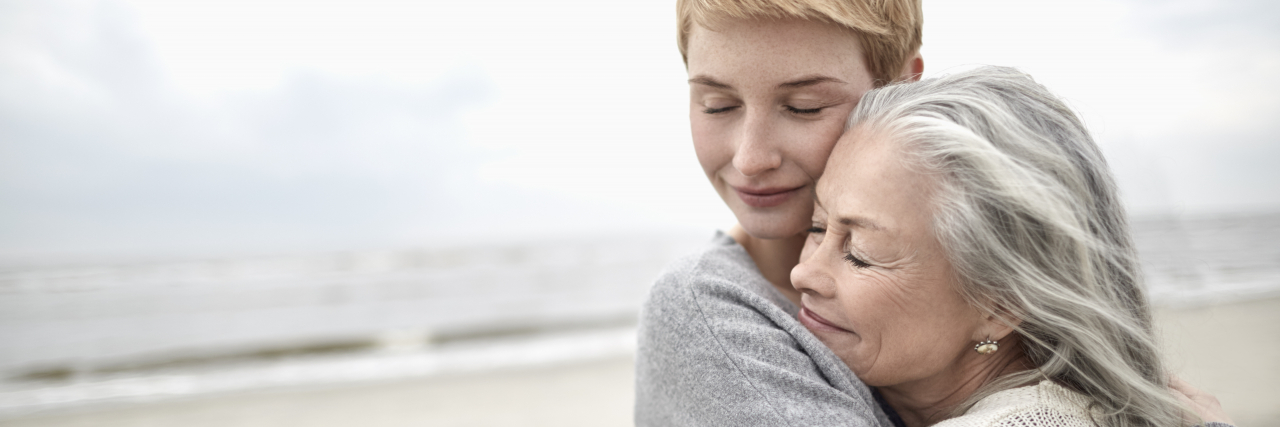There is nothing sweeter than bumping into an old friend and embracing them, but with Ehlers-Danlos syndrome (EDS), this type of love can have unintended, painful consequences. If you know someone who has EDS, then please take a moment to understand why hugging can hurt. This does not mean you cannot demonstrate affection to those who live with EDS — it just means that you must be creative in your approach to showing love. After all, the worst thing you can do is to not express your feelings to an individual who’s in need of any emotional gesture you have to offer.
• What is Ehlers-Danlos Syndrome?
• What Are Common Ehlers-Danlos Syndrome Symptoms?
EDS is a connective tissue disorder, which means that those who have it have defective collagen — the “glue” that holds the body together. This means the person has ligaments and tendons that may not fully stay together, so their bones can slip out of position with simple movements like hugging and touching. EDS patients’ muscles are thus required to take over the job of the ligaments and tendons — all while still acting as muscles. Therefore a person with Ehlers-Danlos syndrome may find that their muscles are on overload. When someone puts pressure on the body, bones can then shift out of position. The bones may move millimeters, but the result may be painful. Thus, the briefest physical contact may result in days of extra pain and a significant setback in an individual’s therapeutic treatment program.
As a person living with EDS, I will share a few personal experiences in an attempt to provide you with insight into how vulnerable my body is. Just last night, we had dinner with some dear friends who are aware of my condition and the journey we have been on as we deal with my 26 surgeries. However, at the end of the evening, as we were in the process of saying goodbye, both of my friends embraced me, and one even put their hands around my now-fused neck to initiate a close embrace. I went home but had trouble staying awake for the evening and had a lousy night’s sleep. That simple gesture caused my neck to slip, my shoulder to subluxate in partial dislocation, and my sternum to slip down onto my chest, causing difficulty with breathing. The next day, I did not feel well, so I looked forward to getting to manual physical therapy to have them reposition many of the bones that caused me pain and discomfort. My husband and I try to keep me protected, but so much social action, particularly with friends, is spontaneous and rapid enough that I don’t always catch it in time.
Another time recently, I was sharing how much better I was feeling, and at the end of the conversation, the person I was talking with was so happy that they wrapped their arms around me and pulled me in for a celebrational hug. That compassionate action again caused another poor night of sleep, my chest to shift inwards, and many unpleasant physical sensations until manual PT was required to correct it all. Once again, this all happened so quickly that I just didn’t catch it in time to prevent the damage.
The hard part is that these expressions of compassion and caring are normal in relationships, but if someone happens to have EDS, the results are not always positive. I have run this over in my mind each time this has happened to me and have had to pay the price, hoping to come up with a plan to try to prevent this from happening again. The underlying problem is that the last thing in the world many of us want is to give our friends the sense that we are rejecting their sincere gestures of affection.
For those living with EDS:
- If you can catch a hug in time, mention that you just can’t be hugged tightly (or at all) due to the possibility of subluxations.
- If the hug happens too quickly, consider crossing your arms over your body to protect yourself.
- Consider extending your hand out to shake instead of leaning in for a hug, then taking your other hand to place over theirs too to show extra care.
- Consider using how hugs affect you as a teaching opportunity for someone who cares about you and would never want to hurt you.
- Consider wearing a brace to protect a vulnerable area.
- If you are going to a planned social event, develop a plan to address this need to protect yourself and not offend others.
For those approaching a friend with EDS:
- Consider asking first if it is OK to be touched and if so, what would be safe.
- Consider extending your hands out instead of reaching in for a hug.
- Consider asking your friend to initiate the movement towards you — whether it be a hug, pat, or handshake — to be sure you are not doing anything to hurt them.
Many of us who have Ehlers-Danlos syndrome don’t look like we can’t be hugged. However, if you don’t have EDS, you might be taken aback when you hear about how painful hugs can be. The last thing you want to do is hurt someone, so take this moment to think about how you might safely express friendship, love, and compassion safely toward your friends with Ehlers-Danlos syndrome. Trust me — your consideration will be greatly appreciated!
Getty image by Oliver Rossi.

